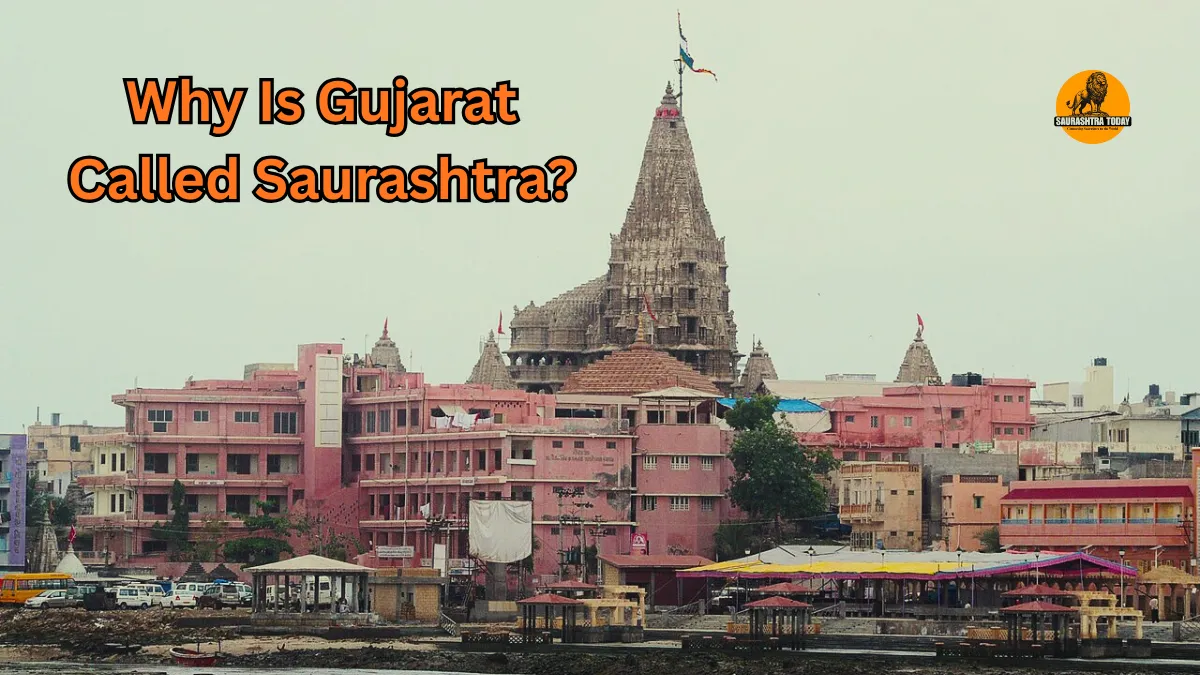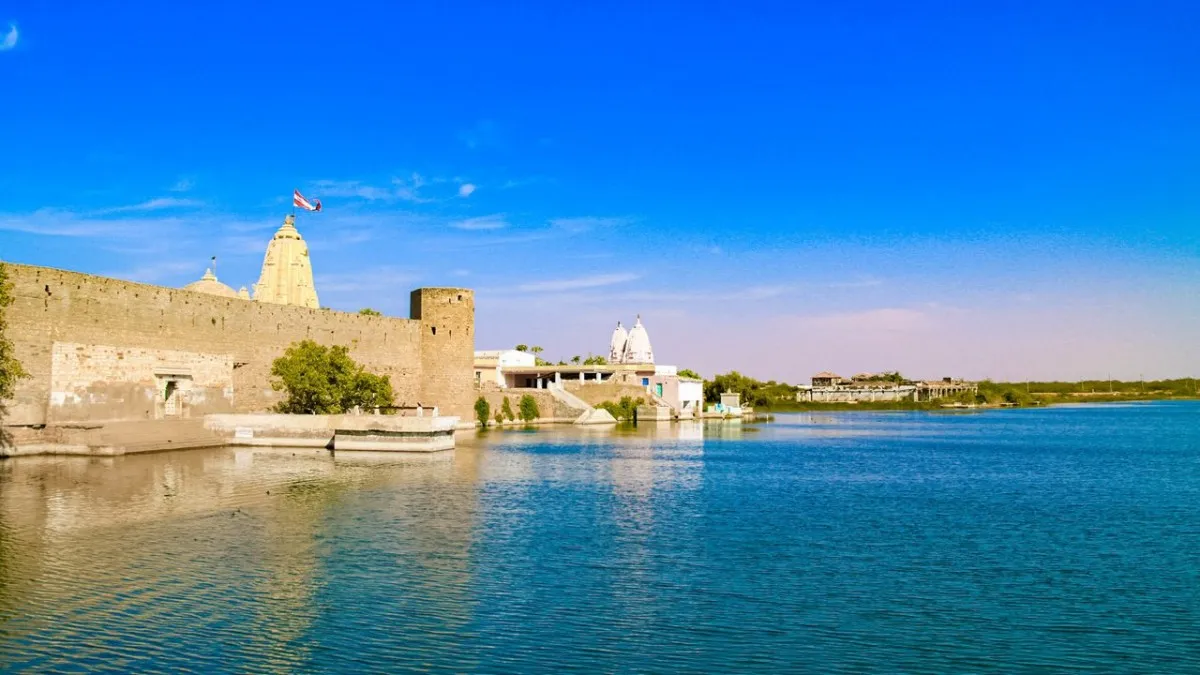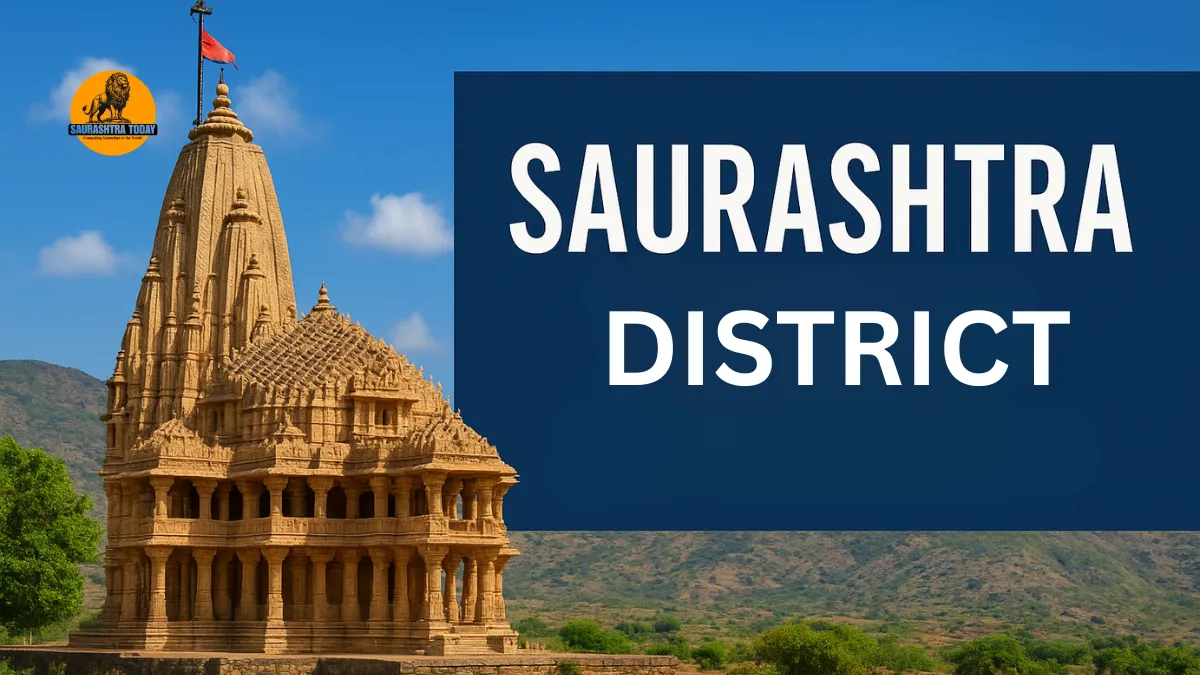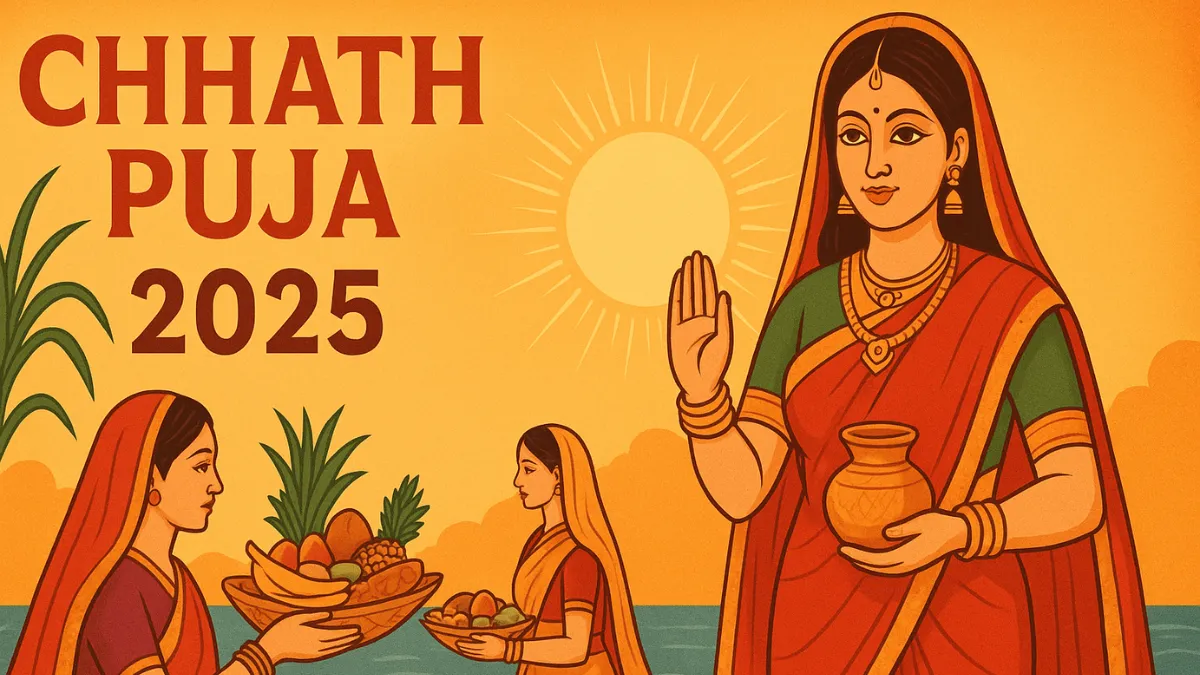Why is Gujarat called Saurashtra? — This question is not just about geography but also about Gujarat’s deep-rooted history, culture, and identity. Saurashtra is not merely a region; it is the soul of Gujarat, a land that has shaped the state’s civilization, faith, and traditions for centuries. In this detailed article, we will explore the complete story behind the name Saurashtra — its origin, geography, religious importance, cultural identity, and why it continues to hold such a special place in Gujarat’s heritage.
Meaning and Origin of the Word “Saurashtra”
The name Saurashtra comes from two Sanskrit words — “Surya” (Sun) and “Rashtra” (Nation or Land). Thus, Saurashtra literally means “The Land of the Sun.”
In ancient times, this region was known as a center of Sun worship. Historical texts and religious scriptures mention Saurashtra as the land of the Sun God, where Suryavanshi (Solar Dynasty) kings once ruled. Because of this association with the Sun and its worshippers, the area came to be known as Saurashtra — the land blessed by the Sun.
Why Is Gujarat Called Saurashtra?
Gujarat is called Saurashtra because the western part of Gujarat, which is also known as the Kathiawar Peninsula, was historically referred to as the Saurashtra region.
This area includes major districts like Rajkot, Junagadh, Bhavnagar, Jamnagar, Porbandar, Amreli, and Gir Somnath. Saurashtra has been known for its trade routes, coastal beauty, temples, and artistic culture for thousands of years. The region represents the true spirit of Gujarat — hardworking people, devotion, and rich traditions.
Geographical Overview of Saurashtra
Saurashtra is a peninsula surrounded by the Arabian Sea on three sides. Its geography is a mix of plains, hills, and coastal lands, making it both fertile and strategic for trade and agriculture.
| Details | Information |
|---|---|
| State | Gujarat |
| Major Districts | Rajkot, Junagadh, Jamnagar, Bhavnagar, Amreli, Porbandar, Gir Somnath, Devbhoomi Dwarka |
| Main Rivers | Ozat, Shetrunji, Bhadar |
| Famous Hills | Girnar Hills |
| Prominent Temples | Somnath, Dwarka, Modeshwar Sun Temple, Girnar Temples |
| Language | Gujarati (Saurashtra Dialect) |
| Main Industries | Diamond, Textile, Fishing, Agriculture |
| Coastal Areas | Veraval, Porbandar, Okha |
Historical Importance of Saurashtra
Saurashtra’s history dates back thousands of years. This region was ruled by several powerful dynasties, including the Mauryas, Satavahanas, Chalukyas, Solankis, and Kathi princely states.
1. Ancient Period
In ancient Indian literature, Saurashtra was referred to as “Sauvira Desh” and “Saurashtra Janapada.”
The Mahabharata mentions Saurashtra as a prosperous and coastal region known for trade and maritime connections.
2. Mauryan and Gupta Era
During Emperor Ashoka’s reign, Saurashtra was a key part of the Mauryan Empire. The famous Ashokan rock edicts found near Girnar in Junagadh confirm the region’s importance.
Later, under the Gupta Empire, Saurashtra flourished as a center of learning, art, and trade.
3. Solanki and Chalukya Rule
Between the 11th and 13th centuries, Saurashtra reached its cultural peak under the Solanki rulers. They built magnificent temples, stepwells, and forts — many of which still stand as architectural wonders.
4. Princely States of Kathiawar
During British rule, the Saurashtra region had over 200 princely states, including Bhavnagar, Nawanagar, Junagadh, Gondal, and Rajkot. These small kingdoms later united to form the Saurashtra State.
Culture and Traditions of Saurashtra
Saurashtra’s culture is a beautiful blend of devotion, artistry, and hospitality. It represents the very essence of Gujarati heritage.
1. Language
People of Saurashtra speak a distinct dialect of Gujarati, often referred to as the Saurashtra Boli. It carries influences from Sanskrit and ancient Prakrit languages.
2. Folk Arts and Music
Traditional dance forms like Garba and Dandiya Raas originated here. Folk songs often celebrate the land, the sea, and the Sun God.
3. Clothing and Cuisine
Men traditionally wear kurta-dhotis while women wear ghagra-cholis.
Saurashtra cuisine includes famous Gujarati dishes like Dhokla, Thepla, Khandvi, Fafda, and Jalebi.
Connection Between Saurashtra and Sun Worship
The name Saurashtra directly links the region with Sun worship. Many ancient Sun temples were built here, symbolizing the people’s faith in the Sun God.
The Modeshwar Sun Temple near Junagadh and the Porbandar Sun Temple are notable examples.
Historically, many kings who ruled here were from the Suryavanshi (Solar Dynasty) lineage, further strengthening this association.
Religious Significance of Saurashtra
Saurashtra is one of India’s most sacred regions, filled with ancient temples and pilgrimage sites.
1. Somnath Temple
Somnath Temple, located in Veraval, is one of the twelve Jyotirlingas of Lord Shiva. It is considered the first among them and symbolizes resilience, as it has been destroyed and rebuilt several times throughout history.
2. Dwarka
The city of Dwarka, located on the western coast of Saurashtra, is believed to be the ancient kingdom of Lord Krishna. It is one of the four sacred Char Dhams in Hinduism.
3. Girnar Hills
Girnar is both a Hindu and Jain pilgrimage site. It is said to be the meditation place of Lord Dattatreya and also home to several ancient Jain temples.
Economic and Industrial Growth of Saurashtra
Saurashtra is a major contributor to Gujarat’s economy. It is rich in minerals, fisheries, agriculture, and industry.
Key industries include:
- Diamond polishing (Bhavnagar, Surat region influence)
- Textile manufacturing
- Fishing and seafood exports
- Salt and cement production
- Handicrafts and brass works
Ports like Veraval, Okha, and Porbandar play an essential role in trade and commerce.
Saurashtra’s Political and Administrative Journey
After India’s independence, in 1948, the princely states of Kathiawar were merged to form the Saurashtra State, with Rajkot as its capital.
Later, in 1960, when the Bombay State was divided on linguistic lines, Saurashtra merged with the newly formed Gujarat State.
This historical unity is the main reason why people still associate Gujarat so closely with Saurashtra — the land that gave Gujarat its cultural backbone.
Also read: Saurashtra Tamil Sangamam: Celebrating Unity Through Culture, Heritage, and Tradition
Modern-Day Saurashtra
Today, Saurashtra is known for its balance of tradition and progress. It remains one of the most culturally vibrant and economically vital regions of Gujarat.
From the Asiatic lions of Gir Forest to the historic temples of Somnath and Dwarka, and from textile industries to agriculture and fisheries, Saurashtra continues to shine as the heart of Gujarat.
Its people are known for their hard work, simplicity, and strong sense of identity. Even though Gujarat is a large and modern state today, Saurashtra still represents its cultural and emotional core.
Also read: Exploring Saurashtra: The Land of Heritage, Culture, and Coastal Beauty
Conclusion: Why Is Gujarat Called Saurashtra?
Gujarat is called Saurashtra because this region — rich in history, devotion, trade, and bravery — has been an integral part of Gujarat’s identity for centuries.
The name symbolizes the land of the Sun, reflecting its bright heritage, divine energy, and eternal resilience.
Saurashtra is not just a part of Gujarat — it is Gujarat’s heart, its spirit, and its shining crown.
In summary:
Saurashtra is not merely a geographical region — it is the living essence of Gujarat’s history, culture, and pride.


















